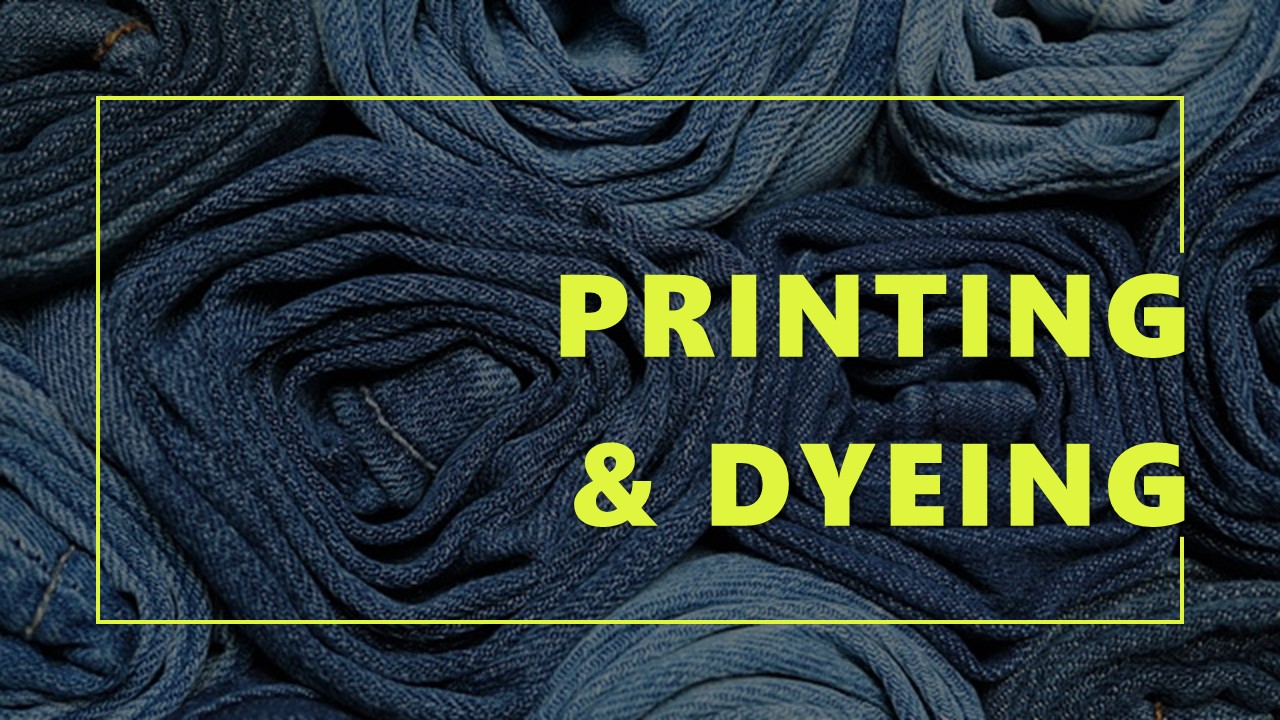2024/9/24

In the first half of 2024, China’s macroeconomic operation was stable; the GDP achieved about 5% medium and high-speed growth, which provided a better support base and favorable conditions for the dyeing and printing industry. From January to June, the production situation of China’s printing and dyeing industry was generally good, with the gradual release of domestic and foreign market demand; the output of printed and dyed fabrics from enterprises above designated size has realized steady growth. The export scale of main products has continued to grow, but the growth rate of exports has declined. The operating efficiency has improved significantly. However, China’s printing and dyeing industry still faces a lot of challenges during the promotion of stable and healthy development. For example, the current domestic consumer market still needs to consolidate the foundation of recovery; export pressure on the printing and dyeing industry gradually appeared; the recovery of large, medium, and small enterprises presents an uneven situation.
I.Production
The data released by the National Bureau of Statistics revealed that the output of printed and dyed fabrics above the designated size in the printing and dyeing industry totaled 28.35 billion meters in the first half of 2024, up by 3.98% year-on-year. In the first half of the year, monthly production of printed and dyed fabrics from enterprises above designated size was maintained at a relatively high level of more than 5 billion meters, and the monthly output in the second quarter improved month by month. With China’s national economy rebounding to a good situation and continuing to consolidate, the domestic textile and garment market demand further improved, providing important support for the stable development of China’s printing and dyeing industry.
II.Exports
According to the statistics released by China General Customs, the export volume of eight major categories of printed and dyed products, i.e., dyed cotton fabric, printed cotton fabric, dyed cotton-blended fabric, printed cotton-blended fabric, synthetic filament fabric, polyester staple fabric, printed and dyed T/C fabric, man-made staple fabric, totaled 16.21 billion meters in the first half of 2024, up by 2.73% year-on-year. The export value reached US$ 15.39 billion, and a year-on-year increase of 0.73% was seen. The average export unit price was US$ 0.95/meter, declining by 1.95% year-on-year.
In the first half of 2024, the inflationary pressure in major developed countries gradually eased; the global economy is recovering moderately; international brands enter the inventory replenishment cycle. The demand for China’s printed and dyed fabrics increased from Vietnam, Bangladesh, and other countries. The exports of China’s eight major categories of printed and dyed products achieved a slight increase on the basis of a high base in the same period as the previous year. Still, the current trend of growth in external demand was not stable. The export growth rate of China’s eight major categories of printed and dyed products decreased month by month amidst the weakening consumption in developed countries, downward global manufacturing prosperity, and higher base.
From January to June, the exports of China’s printing and dyeing industry to ASEAN and RCEP member states performed significantly better than the overall export situation. From January to June, the export volume of eight major categories of printed and dyed products, i.e., dyed cotton fabric, printed cotton fabric, dyed cotton-blended fabric, printed cotton-blended fabric, synthetic filament fabric, polyester staple fabric, printed and dyed T/C fabric, man-made staple fabric, to ASEAN totaled 3.98 billion meters, up by 11.09% year-on-year, 8.36 percentage points higher than the total export growth rate. That to RCEP member states reached 4.23 billion meters, seeing an increase of 10.14% year-on-year, 7.41 percentage points higher than the total export growth rate.
From January to June, the exports of China’s eight major categories of printed and dyed products to the top ten destinations totaled 6.78 billion meters, accounting for 41.82% of the total. Among them, the export volume and value to Vietnam, Bangladesh, and Brazil all achieved double-digit growth; Vietnam is the only one of the top ten destinations that saw growth in the average unit price of exports. The exports of China’s eight major categories of printed and dyed products to Nigeria, Indonesia, Myanmar, Russia, and Pakistan showed varying degrees of decline, of which the decline in exports to Pakistan was the most pronounced, with the export volume and export value dropped by 45.14% and 61.51% respectively.
III.Operation quality and efficiency
According to the data from the National Bureau of Statistics, the share of three overheads in turnover was 6.93% in the first half of 2024, down 0.17 percentage points year-on-year. The turnover rate of finished products was 13.65 times/year, declining by 4.71% year-on-year; the turnover of accounts receivable was 7.84 times/year, seeing a year-on-year decrease of 3.97%; and the total asset turnover was 0.96 times/year, up 3.37% year-on-year. The key indicators for operational efficiency all showed improvement compared to the previous year, and the overall quality of business operations also increased gradually.
The data from the National Bureau of Statistics showed that the operating income of China’s printing and dyeing enterprises above the designated size totaled 152.74 billion in the first half of this year, seeing a year-on-year increase of 9.30%. Their profits totaled 6.37 billion yuan, ballooning by 64.42% year-on-year. Its ratio of profits to cost was 4.47%, up by 1.54 percentage points year-on-year. 36.63% of printing and dyeing enterprises operated in deficit, which decreased by 1.99 percentage points year-on-year. Their loss totaled 1.98 billion yuan, down by 12.90% year-on-year. Although the benefit of China’s printing and dyeing industry improved significantly in the first half, the industry loss was still high. Compared with the same period last year, the loss saw a slight narrowing, reflecting the profitability of enterprises with different sizes, different products, and different business models had large differences.
Source: CHINA TEXTILE LEADER Express



Authority in Charge: China National Textile and Apparel Council (CNTAC)
Sponsor: China Textile Information Center (CTIC)
ISSN 1003-3025 CN11-1714/TS
© 2025 China Textile Leader, all rights reserved.
Powered by SeekRay